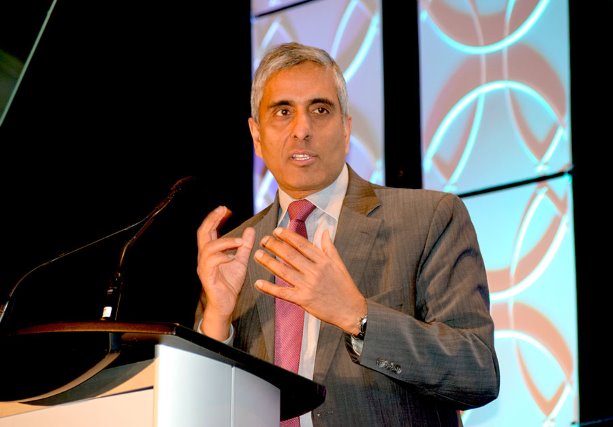Day one of the Ontario Road Builders’ Association’s (ORBA) recent conference in Toronto was billed as Innovation Day and with University of British Columbia professor and futurist Arvind Gupta pointing the way forward in a kickoff morning session, the roadbuilders were issued a challenge to embrace the future.
ORBA executive director Geoff Wilkinson explained why Gupta and other construction innovators such as Gerardo Flintsch, director of the Center for Sustainable Transportation in Virginia, Barrie Kirk, executive director of the Canadian Automated Vehicles Centre of Excellence and John Carpenter, manager of Caterpillar Construction Digital and Technology, were invited to address the ORBA delegates.
"What we tried to do is take innovation and utilize what’s available today, and also look into the future," he said, pointing out that ORBA has joined the Canadian Construction Innovation Council. "I think innovation has all those parts.
"It is a buzzword, it is a thing we should be working on, but as Mr. Gupta said, we are not there yet. We have a long way to go to get there."
Gupta’s presentation on Feb. 6 focused on Canada’s poor productivity measurables. The country’s productivity has fallen in the past 30 years and now Canada registers at approximately 76 per cent of the productivity of the U.S., compared with 91 per cent in 1985, Gupta said. Twenty years ago Canada was number 10 in the world in business innovation, he said; now Canada is number 26.
The computer science prof then presented the case that Canada’s construction sector, operating in a new infrastructure age, is well placed to spearhead a productivity breakthrough. To lead the charge, Gupta called for the creation of a new body, perhaps called the Canadian Construction Advanced Research Project Agency, CCARPA for short, to be modelled after DARPA in the U.S. — the Defense Advanced Research Program Agency.
Arvind Gupta
University of British Columbia
The military was once a primitive, low-tech operation, Gupta said. But when the Soviets launched their sputnik program, the U.S. resolved to ensure its military stayed one step ahead of the rest of the world and created DARPA.
DARPA is funded through a formula that gives it two per cent of U.S. defence procurement.
So with $150 billion spent annually on defence, DARPA gets $3 billion, Gupta said. Agency researchers search the globe looking for significant research projects and when they find innovations that might be helpful 10 or 20 years in the future, they bring them home and work with U.S. businesses to undertake development, Gupta explains.
The results are plain to see: U.S. military researchers, and similar bodies that adopted the model such as NASA, spawned the Internet, drones, robotic warfare, stealth bombers, GPS, self-driving cars, security systems, CCD chips in cameras and much more.
"In all these areas, U.S. firms are world leaders," said Gupta.
Now it’s time for the Canadian construction sector to tear a page out of the U.S. playbook, the professor told ORBA members. Canada is typically ranked top three in construction spending per capita in the world, Gupta noted, so with the $45- to $50 billion governments and their agencies are now pledging to spend on infrastructure annually, it is time to launch the CCARPA.
Consider bridge building, said Gupta. Canadians have already developed advanced hydrophilic materials that reject water. The country could use concretes that are malleable enough to withstand earthquakes, passive sensors to identify future micro fractures and green concretes that emit tiny amounts of greenhouse gases.
With those innovations embedded into procurement, Canada could become a world leader in bridge technology, Gupta suggested.
"The world is going to want to buy our bridges," he said.
Gupta then invited the ORBA members to take note of one more set of statistics. China will be procuring $5 trillion in infrastructure from outside their country in the next 10 years; India is talking about procuring $1.5 trillion in roads alone. And projections are that there will be $50 trillion spent on infrastructure around the world in the next 15 years.
"Just imagine if we could get five per cent of that business, $2.5 trillion," said Gupta. "It would double our construction industry overnight."











Recent Comments
comments for this post are closed